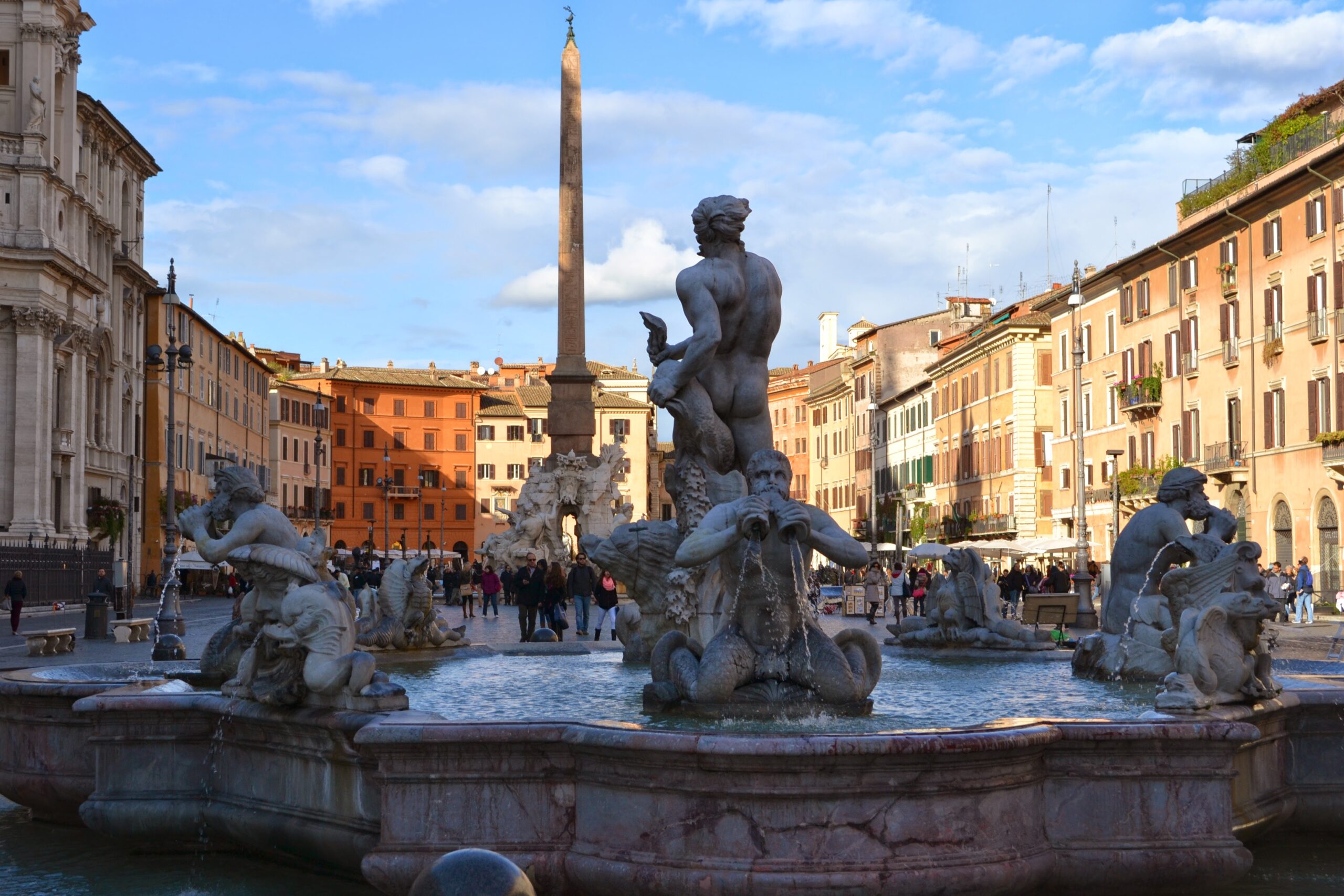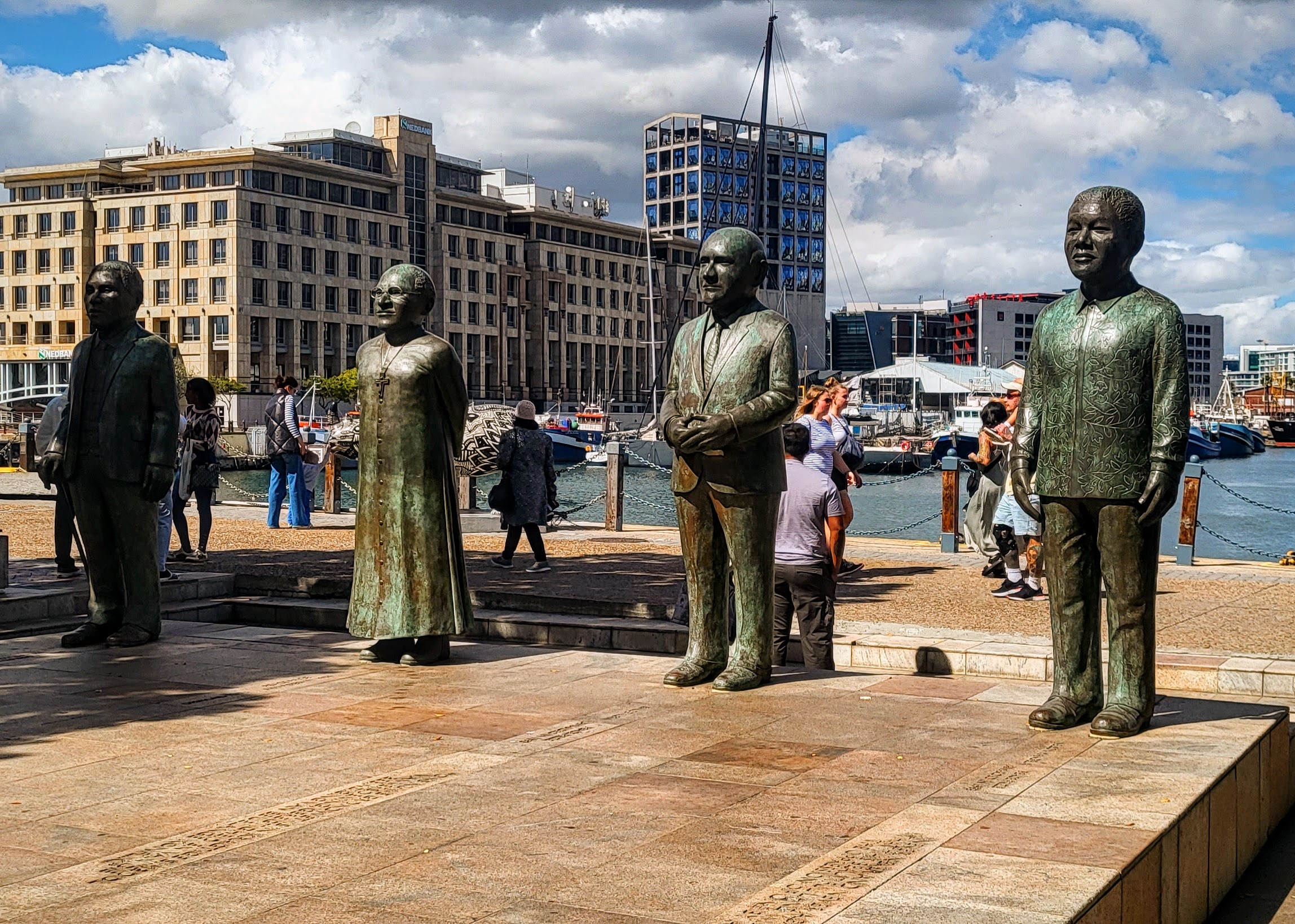TALKING BENGALI IN ROME
This story was published in GoNomad in 2014.
The Coliseum, Rome – photo by me
The first one we saw was on the wide boulevard between the Vittorio Emmanuel II monument and the Coliseum. A large crowd had gathered and was intently watching something. People jostled against each other for a better view and cameras and cellphones clicked away. As we walked up to the crowd, I saw the strange spectacle inside the circle. A man dressed as a Hindu ‘swami’, in flowing orange robes, was sitting cross-legged about three feet above the pavement, as if floating in the air; his right arm holding a walking stick, his eyes closed and his face serene and peaceful. The mainly East European crowd of tourists clicked away in a frenzy. There were hushed whispers. Some people just stood and stared in shock and I saw at least one woman mumbling a prayer and making the sign of the cross across her chest.
A Hindu ‘swami’ levitating a stone’s throw from the Vatican! What could be stranger than that?
The levitating Hindu sadhu on the streets of Rome – photo by me
Unknown to most tourists, the levitating man was not a holy man, not Indian and not even a Hindu. He was just one of tens of thousands of Bangladeshi immigrants, almost all Muslim, who have flooded into Italy and Rome in particular, in the past three decades. Mostly young and desperate, mostly working menial jobs and during earlier visits to Italy we saw many of them selling souvenirs and snacks to tourists around Rome’s most popular sites. But this was a completely new gig for them.
Having grown up in Kolkata (formerly Calcutta), India, I have seen this particular trick many times. I knew that hidden inside the ‘walking stick’ and flowing robes was an apparatus that held a stable seat on which the performer sat. All he had to do, once it had been set up by his comrades, was to close his eyes and pretend to be meditating.
Over the next couple of days, we saw many more of them all over the city. In the Piazza Navona, we saw an even more complex set-up with two ‘swamis’ one balancing on the outstretched hand of the other. We even saw a group of three men setting up the display right in front of our hotel next to the Pantheon. They hid under a large black cloth cover while working inside in privacy. Once they were finished with the set-up, they quickly removed the black cover and moved away, leaving the fake ‘swami’ to collect alms.
The set-up in process, streets of Rome – photo by me
The set-up in process, streets of Rome – photo by me
The set-up in process, streets of Rome – photo by me
The set-up is complete, streets of Rome – photo by me
After coming down from the Roman Forum, we walked past a row of sidewalk cafes right behind the Coliseum. Young Bangladeshi men stood on the side of the road, soliciting for customers from the cafes. Hungry and thirsty, we entered a very modern looking café and took a table near the window. The place was empty at four in the afternoon. We ordered appetizers and a carafe of red wine. I noticed the young Bangladeshi man, whom I will call Hamid, who had accosted us on the street and guided us in, watching us intently. I motioned for him to come and join us. He came and hesitantly sat down across from my wife. I started speaking to him in Bengali. His whole face lit up. After the introductions, he couldn’t stop talking. He talked on and on about life in Rome and how horrible it was. He had spent 10 years in the Eternal City and now spoke fluent Italian, had permanent residency, and was the assistant manager of the café we were in; and yet he regretted having come. All his savings of the last 10 years had been spent on treating his mother’s cancer back home in Dhaka, and his greatest regret was that he could not even afford to go and see her before she passed away.
We talked for a couple of hours, sipping wine and munching on the delicious appetizers. We were people from two different countries, from different religious backgrounds, living in two different parts of the globe, and yet sharing a common language and culture.
Fountain in Piazza Navona, Rome – photo by me
The famous Trevi fountain, Rome – photo by me
The Pantheon, Rome – photo by me
An Englishman named Job Charnock sailed up the Hooghly River from the Bay of Bengal and founded the city of Calcutta in 1690. Calcutta became the capital of British India and was the second city in the Empire that stretched across almost half the earth. Bengal, the region in which Calcutta lies, is a land of contrasts, extending from the mighty snow clad Himalayas and foothill tea plantations through the fertile and flood-prone rice and jute growing plains of the Ganges, down to the mangrove swamps on the edge of the Bay of Bengal. The people, too, are a mix between the people who came in from the north and the people who lived further east, and were almost equally split between Hindus and Muslims. Bengal, before the British took over, was ruled by a Muslim king. And while most of the large landowners were Hindus, the majority of sharecroppers were Muslim. The British divided Bengal into East and West, with a Muslim majority in the east and a Hindu majority in the west, in 1905. The capital was moved to New Delhi in 1911 and when India was granted independence in 1947, the country was split into two. Pakistan became a country comprised of two disparate and disjointed regions in the east and the west. The impractical union lasted a mere 24 years before the country of Bangladesh was born in 1971 after a bloody civil war which killed millions and led to the migration of millions of others.
Bangladesh, a land largely neglected by Pakistan, became an international symbol of poverty and genocide. Independence was followed by bloody coups and political instability and the large exodus of the youth started. Bangladeshis started migrating in droves to the west, mainly to the U.K., but also to the Middle-East and the USA. In colonial times, common advice given to English youth was: ‘Go East, young man!’ Well, the advice in Bangladesh seems to be: ‘Go West, young man!’
The number of Bangladeshis in Italy is estimated to be over 100,000. They join a growing number of North Africans, East Europeans, and others who have moved in to fill the void left by the millions of Italians who migrated to the New World. Our taxi driver who drove us to our hotel was from Bolivia. The man, who carried our suitcases up the 4 flights of stairs to our hotel room, because the elevator was not working, was from North Africa. A quick walk through a local produce market in the heart of the historic core of Rome was like walking through an ‘ethnic theme park’, where people from all over the world had gathered, people of all hues, speaking dozens of different languages.
Back in Los Angeles, I was talking to a friend, a second generation Italian-American.
‘Oh it’s horrible in Italy. The country has changed forever,’ he said.
He reminded me of the English couple we had met in a coffee shop in Spain, who had migrated and settled down in the Costa del Sol and were lamenting the loss of ‘England’.
‘England is no more. It has become a third world country,’ they complained while sipping cups of steaming Guatemalan coffee.
The world is changing like never before, as people move across borders and continents in ever increasing numbers, searching for a better life. The Bangladeshis of Rome are reduced to plying junk souvenirs made in China, and performing cheap tricks for unsuspecting tourists, many of whom travel from the newly liberated countries of Eastern Europe.
Leaving the café, heady with all the Tuscan wine, we were accosted by another young Bangladeshi, this time selling shawls.
‘Chay-na,’ I said to him in Bengali, which means, ‘I do not want it.’
‘No sir, no sir. It is not made in China. It is made in Italy,’ he replied, earnestly.




60 responses to “ROME: Where the world meets!”
https://vitz.ru/forums/index.php?autocom=gallery&req=si&img=4825
Clifford,
I can’t read you comment.
Please re-send.
Sam
I’m so glad I found this post! Your insights are incredibly valuable, and I love how you’ve approached the topic from multiple angles. You’ve provided a clear and comprehensive overview while still diving into the more nuanced aspects of the subject, which is something I really appreciate.
Thanks for reading and leaving your feedback.
Very good https://shorturl.at/2breu
Thanks
Awesome https://lc.cx/xjXBQT
Thank you.
Very good https://lc.cx/xjXBQT
Thank you.
Very good https://lc.cx/xjXBQT
Thank you
Good https://lc.cx/xjXBQT
Thanks.
Awesome https://lc.cx/xjXBQT
Thank you.
Awesome https://lc.cx/xjXBQT
Thank you.
Awesome https://short-url.org/10VGf
Thanks.
Good https://t.ly/tndaA
Thank you.
Awesome https://urlr.me/zH3wE5
Thank you
Awesome https://urlr.me/zH3wE5
Thank you
Very good https://rb.gy/4gq2o4
Thank you
Very good https://is.gd/N1ikS2
Thank you
Very good https://is.gd/N1ikS2
Thank you
Awesome https://is.gd/N1ikS2
Thank you very much.
Very good https://is.gd/N1ikS2
Thank you
Good https://is.gd/N1ikS2
Thanks
Very good https://is.gd/N1ikS2
Thank you
Very good https://is.gd/N1ikS2
Thank you
Dear DrSam,
Please notice that many of the comments are just spam… Verify it’s links. Remove it or it will damage your rankings and domain credibility…
Okay, thanks.